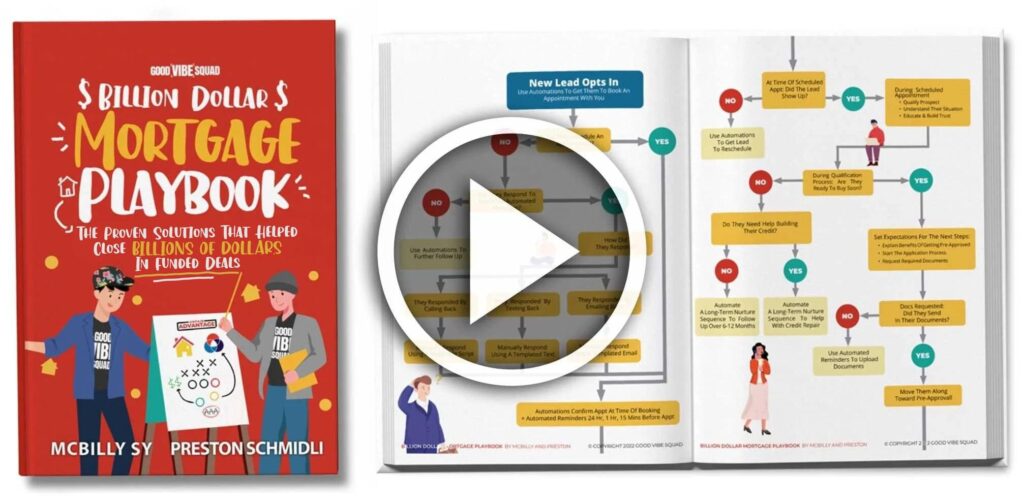The mortgage industry is consistently changing and, to remain competitive, mortgage lenders must constantly adjust their marketing strategies in order to respond to the ever-changing interest rates and remain one step ahead of their competitors. One effective way to do this is by monitoring key performance indicators (KPIs). But what mortgage industry KPIs should you be monitoring and why? Here we take a closer look at some of the key KPIs you should be consistently monitoring to best adjust your business plan and marketing strategies.
Key Takeaways
- Mortgage KPIs help us understand how well the loan process is working and show where we might need to make improvements.
- Important mortgage KPIs to track are pull-through rate, average cycle time, average mortgage loan value, application approval rate, abandoned loan rate, customer acquisition cost, cost per unit originated, and incomplete application rate.
- Keeping an eye on these KPIs helps businesses make better decisions, find more customers, and close more loans successfully.
Get Our Billion Dollar Mortgage Playbook
Get the proven strategies that helped close Billions of dollars in funded deals!
What are KPIs?
Key performance indicators, or KPIs, are defined as quantifiable measures used to evaluate the success or progress of an individual or business toward meeting key performance objectives or another end result.
What are mortgage lending KPIs?
Mortgage KPIs measure the effectiveness and efficiency of your current loan process, including everything from initial contact to closing and beyond. Tracking KPIs allows you to see where your performance currently stands and how your business is trending, as well as provides insight into areas where you may need to implement change.
Why KPI tracking is important?
When your business performance is not achieving your desired goals, it can often be difficult to pinpoint exactly what isn’t working and why. Implementing clearly defined KPIs can provide critical information into the relationship between individual performance and the success of different aspects of the business.

Advantages of KPI tracking
The advantages of KPI tracking are tenfold, but here we explore three of the most common advantages for loan officers including: improved decision making, risk management, and performance evaluation.
Improved Decision Making
Mortgage KPIs provide a clear picture of your business performance, allowing you to make data-driven decisions. By analyzing your KPIs, you can identify areas that need improvement and take action to optimize your operations. For example, by tracking your pull-through rate, you can determine if you need to improve your application processing times or if you need to focus on marketing efforts to attract more qualified borrowers.
Risk Management
Tracking mortgage KPIs can also help you manage risk. By monitoring the health of your mortgage business, you can begin to spot bottlenecks ahead of time and take steps to mitigate risk. Additionally, you can ensure that your front-end and back-end processes are up to par.
Performance Evaluation
Mortgage KPIs also provide a way to evaluate your business performance over time. By tracking your KPIs on a regular basis, you can see how your business is performing and identify trends that may require action. For example, if you notice a decline in your pull-through rate over several months, you may need to investigate the cause and take corrective action.
Essential KPIs you should be tracking
To better determine which KPIs you should be tracking, it is essential to review your specific organization goals. Once you determine these goals, you can better identify which KPIs will help provide insight that will help you reach those established goals. Here we look at some of the key KPIs for the mortgage industry.
1. Pull-through rate
The pull-through rate KPI measures the efficiency of your pipeline. To calculate this metric, you divide your total funded loans by the number of applications submitted for the defined time period, such as monthly. This metric offers insight into the overall health of your operation, evaluating things such as your workflow efficiency, application quality, customer service, interest rate competitiveness, and how well your target market profile is actually working to achieve the results you are looking for. This specific KPI is not designed to single out a specific problem, but rather to evaluate your system as a whole and identify if there may be a potential problem.
2. Average cycle time
The average cycle time KPI is a fantastic metric for measuring your overall efficiency, with lower cycle times representing a more efficient process. To determine this metric, you divide the sum of days from application to funding on all loans by the number of total loans funded.
3. Average mortgage loan value
The average mortgage loan value KPI is a metric that provides information on loan profitability. In general, the workload required for a conforming conventional loan is not much different for a loan under $200,000 than it is for one over $500,000. However, the amount of revenue your company can generate from these two specific loans can be very different. To determine your average mortgage loan volume, you divide your total loan volume originated by the number of loans funded for the same period. The closer your average mortgage loan volume is to the conforming limit, the higher your profits are likely to be.
4. Application approval rate
The application approval rate KPI can provide valuable insight into two specific metrics: client acquisition and loan application workflow. When your application approval rate is low it can either mean you have a disruption in your workflow (problems with document gathering or a problem in the application review process) or you are not connecting with your ideal customer profile, but rather with unqualified applicants. To determine this KPI, you divide the number of approved applicants by the number of submitted applications.
5. Abandoned loan rate
The abandoned loan rate looks at those loans that receive approval but are never funded, often indicating potential post-application process problems. When a borrower applies for and is approved for a mortgage but never follows through, you have to question what is causing this. In many cases, this can indicate fluctuations in the interest rate competitiveness of your agency, problems with communication, or not following through with a client. To determine this KPI, you divide the number of approved applications not funded by the number of approved applications during the same time frame.
6. Customer acquisition cost
The customer acquisition cost KPI looks at how much it costs to acquire a customer in relation to their lifetime value to the company. To determine this metric, you divide your total cost of sales and marketing by the total number of new customers.
7. Cost per unit originated
The cost per unit originated KPI helps measure the efficiency of your business when it comes to operating expenses, cycle times, and your pull-through rates and how they are affecting your profitability. To determine this metric, you divide your total business expenses by the number of loans funded for the same period of time. Excess overhead expenses, such as salaries, can greatly affect your profit margin. Keeping your costs in line with your expected performance helps to ensure you maintain your desired profit.
8. Incomplete application rate
The incomplete application rate looks at loan applications that are closed for incompleteness. This can be due to several factors, such as an incomplete application or missing documents. When these occur, you have to ask yourself a number of questions. Are you targeting the right customer profile and is your target audience really in the position to close on a loan? Are you communicating the necessary steps and information needed to complete an application? To determine the KPI metric, you divide the number of applications closed for incompleteness by the number of applications received during the same time period.
Regular Monitoring
Tracking mortgage KPIs is not a one-time event. To get the most out of your metrics, you need to monitor them regularly. Here are some tips on how to monitor your KPIs effectively:
- Set up alerts: Set up alerts for critical KPIs so that you can take action immediately if there is a problem.
- Schedule regular reports: Schedule regular reports to keep track of your KPIs over time.
- Review KPIs with your team: Review your KPIs with your team on a regular basis to identify areas for improvement and share best practices.
Benchmarking
Benchmarking is the process of comparing your KPIs to industry standards or best practices. By benchmarking your KPIs, you can identify areas where you are underperforming and set goals for improvement. Here are some tips on how to benchmark your mortgage KPIs:
- Research industry benchmarks: Research industry benchmarks for your KPIs to see how you compare to other lenders.
- Set realistic goals: Set realistic goals based on industry benchmarks and your own historical performance.
- Track progress: Track your progress towards your goals and adjust your strategies as needed.
Technology Can Streamline KPI Tracking
Technology can be a game-changer when it comes to tracking mortgage KPIs. With the right tools, you can automate data collection, generate reports, and visualize your performance metrics. Here are some examples of technology solutions that can help you track mortgage KPIs:
- Loan Origination Systems (LOS): An LOS can help you track KPIs such as units funded per month, pull-through, and days from app to funding.
- Customer Relationship Management (CRM): A CRM can help you track KPIs related to customer satisfaction, such as Net Promoter Score (NPS) and customer retention rate.
- Business Intelligence (BI): A BI tool can help you visualize your KPIs in real-time, identify trends, and drill down into the data to find insights.
Tracking KPIs provides valuable insight
Tracking the right KPIs can help you gain valuable insight into what is and is not working within your operation. Using these valuable tools can help you adjust your strategies to better boost lead generation, client acquisition, and your rate of loan closures.
At Good Vibe Squad, we know the importance of understanding your client profile and generating leads that fit that profile. With KPIs, you can gain a better understanding of this client profile and tap into our Unfair Advantage™ program for a boost in your lead conversion.
To learn more about how the team at Good Vibe Squad can help improve your KPIs and lead generation, schedule a call today.







